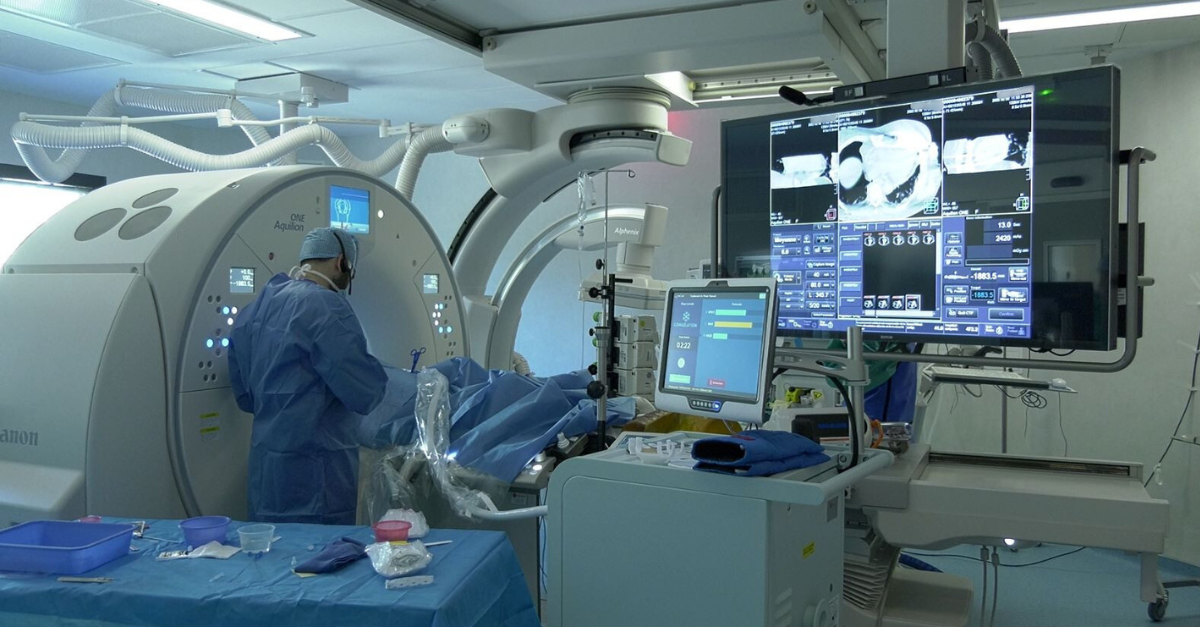IceCure’s Cryosurgical Tool Redefines Minimally Invasive Tumor Ablation
 In the ongoing battle against cancer, IceCure Medical is providing minimally invasive, lifesaving options for patients with its revolutionary cryoablation technology, particularly through its flagship product, the ProSense® System. This state-of-the-art system offers an alternative to traditional surgical methods, effectively targeting both benign and malignant tumors while significantly enhancing patient comfort and recovery. IceCure’s approach is particularly timely, as the demand for less invasive treatments that improve patient outcomes and minimize the physical and emotional toll of cancer care continues to grow. Its cryoablation technology represents a groundbreaking shift in how tumors are treated.
In the ongoing battle against cancer, IceCure Medical is providing minimally invasive, lifesaving options for patients with its revolutionary cryoablation technology, particularly through its flagship product, the ProSense® System. This state-of-the-art system offers an alternative to traditional surgical methods, effectively targeting both benign and malignant tumors while significantly enhancing patient comfort and recovery. IceCure’s approach is particularly timely, as the demand for less invasive treatments that improve patient outcomes and minimize the physical and emotional toll of cancer care continues to grow. Its cryoablation technology represents a groundbreaking shift in how tumors are treated.
With FDA clearance and CE marking, the ProSense System has been validated through extensive clinical experience across various cancer types. Utilizing liquid nitrogen to create ultracold temperatures that freeze and destroy tumors, it provides a novel solution that is not only effective but also well tolerated by patients. Procedures can be performed in office settings or CT rooms, offering patients quick, convenient and efficient treatment options. The ProSense System’s versatility is particularly noteworthy because it treats a broad range of tumors, including those in the breast, kidney, lung, liver and musculoskeletal regions. This wide applicability exemplifies IceCure’s mission to make effective, less invasive procedures accessible to more patients for a variety of tumor types or location. By focusing on patient-centered care, IceCure Medical is not just providing more choices for cancer patients—it’s redefining the minimally invasive procedures altogether.
How Cryoablation Works
Cryoablation is a minimally invasive procedure that uses extreme cold to destroy benign or malignant tumors. Targeted tissues are visualized using imaging guidance such as ultrasound or computed tomography (CT). A freezing agent, typically argon or liquid nitrogen, is administered through a cryoprobe, freezing and destroying the abnormal tissue. During the procedure, one or more cryoprobes are inserted into the affected area after anesthesia or conscious sedation. Ultrasound or CT imaging guides placement to ensure proper positioning. The freezing agent circulates within the cryoprobe, creating an ice ball around the targeted tissue. CT scans verify that the ice ball covers the entire tumor and a margin of healthy tissue. Once treatment is complete, the cryoprobe is warmed and safely extracted.
Cryoablation is an effective treatment for a wide range of tumors, and its suitability depends on the tumor’s type, location, size and visibility. This technique is particularly beneficial for patients unable to undergo surgical tumor removal due to age or comorbidities. It helps alleviate pain and manage symptoms of metastatic cancers. A typical percutaneous cryoablation procedure takes about 1.5 to 2 hours, although it can be shorter—between 15 and 45 minutes—when treating certain tumors. Cryoablation is generally safe, with lower risks compared to traditional surgery. While there is a small chance of complications, such as bleeding or infection, the overall risk is minimal.
In essence, cryoablation destroys tumors by freezing them, causing cellular dehydration and damage. This reduces blood flow to the tumor, and the necrotic tissue is gradually absorbed by inflammatory cells through phagocytosis. Over time, the damaged tissue is replaced by a fibrous scar. Patients typically tolerate cryoablation well, as the necrotic process is a natural response.Compared to heat-based treatments like radiofrequency ablation, cryoablation often results in less pain and quicker recovery, and the procedure can be repeated if necessary.
Clinical Success and Future Innovations
Cryoablation has gained traction for treating breast tumors, particularly benign ones like fibroadenomas, with FDA clearance for various indications and CE marking. Clinical trials support its effectiveness, with the American Association of Breast Surgeons recognizing it as a viable option for resolving fibroadenomas without surgical excision. In a study of 60 procedures, the ICE Crystal Study reported 93% of fibroadenoma were completely resolved at one-year post-cryoablation.
In recent years, percutaneous cryoablation has become increasingly common for early-stage lung cancer, especially in medically inoperatable patients. Studies show this technique is safe and effective, with promising long-term survival rates and minimal complications. For instance, a study involving stage I non-small-cell lung cancer patients demonstrated satisfactory local control and recurrence-free survival for tumors smaller than 1.8 cm.
Renal cell carcinoma (RCC) is a prevalent form of kidney cancer, and cryoablation is increasingly accepted as an effective treatment for small renal tumors. Recent studies indicate cryoablation can achieve outcomes comparable to traditional surgical methods, with significantly fewer side effects. The ICESECRET Trial showed an 89.5% recurrence-free rate at a mean follow up of 22.2 months for a subgroup of patients with no history of cancer on the same kidney and lesions less than 3cm.
For the treatment of early-stage breast cancer, IceCure's ICE3 clinical trial reported a local recurrence free rate of 96.3% for patients treated with cryoabaltion and endocrine therapy. Patients and physicans reported 100% satisifcation with the less invasive procedure which reports minimal scarring and minimal pain (thanks to the natural numbing effect of the cold).
Looking ahead, IceCure is awaiting FDA clearance for the specific indication of cryoablation for early-stage low risk breast cancer. Already available in the EU and other global regions, cryoablation for breast cancer will offer women the choice of a minimally invasive procedure with minimal scarring, minimal pain, and rapid recovery. Investigator initated trials for other types of tumors continue to demonstrate the benefits of cryoabaltion. A recent study in Italy conluded that LN2 based cryoablation is safe across a wide range of tumor sizes and locations, with 97.7% complete tumor coverage and only minor complications observed. In lung cancer, a Japanese study showed recurrence-free rates from 77% to 100% based on tumor size, while research on musculoskeletal tumors indicated a 92.8% effiacy rate in avoiding a secondary surgery for endometriosis. Furthermore, IceCure's innovations, such as the newly FDA-cleared XSense™ cryoablation system, are expected to enhance precision and efficacy, broadening the range of treatable tumors.
Cryoimmunology—or cryoimmunotherapy—combines cryoablation with immunotherapy, creating a synergistic effect that not only destroys tumors but also boosts the patient’s immune response. This approach may serve as an effective tumor vaccine, potentially eradicating visible disease, especially in metastatic patients, while also managing cancer pain with minimal side effects. This is another example of IceCure’s intent to change the landscape of cancer treatment and prolong the lives of those affected by the disease. By harnessing innovation, IceCure Medical is not only advancing cancer treatment but also offering renewed hope and improved quality of life for patients facing this challenging journey.
www.icecure-medical.com


